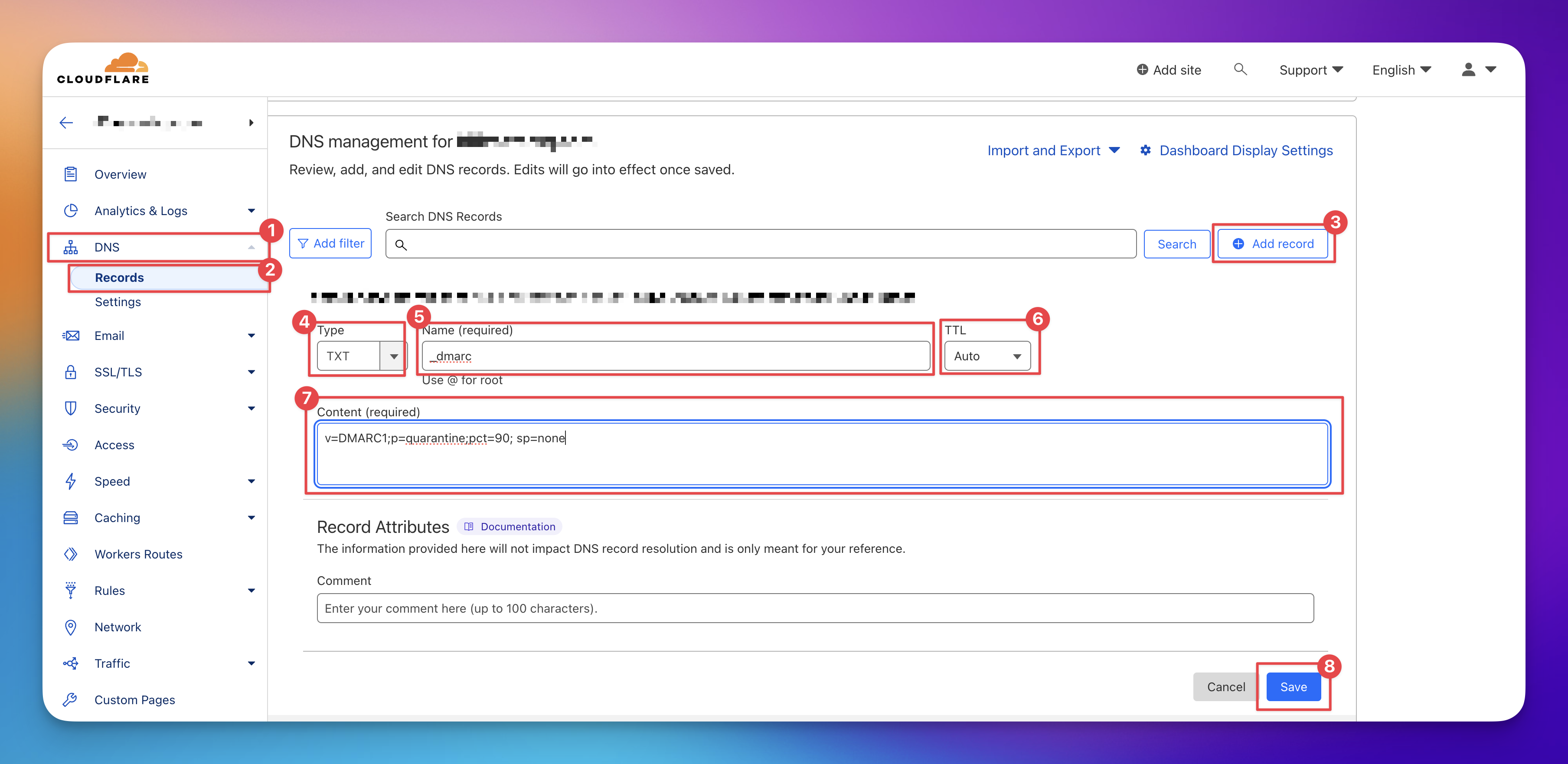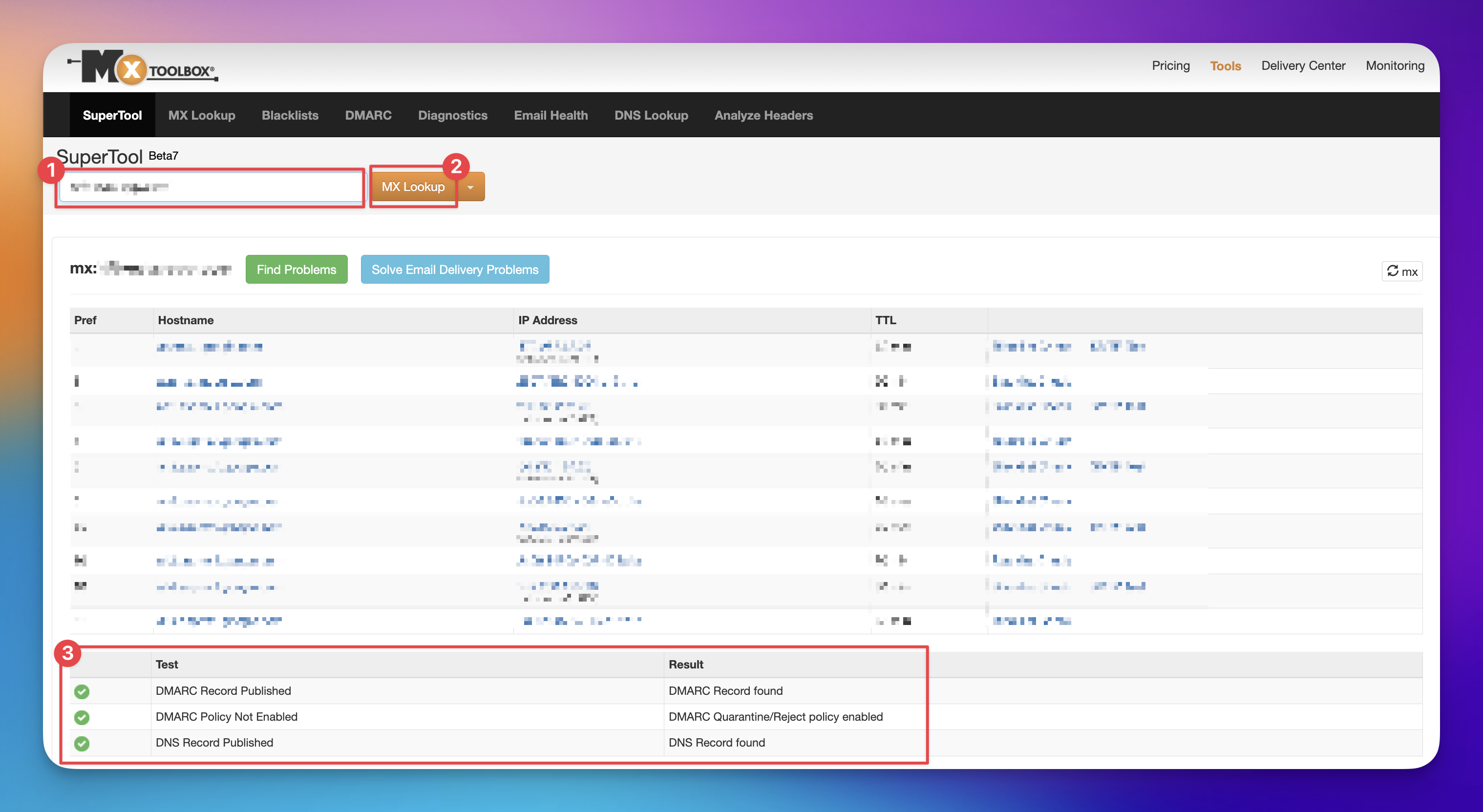This guide walks you through the process of setting up your email domains using SPF, DKIM, DMARC, and domain forwarding. Let's get started!
Go to 👉Google Admin Console and click "Add a domain"
After you've added your domain to Google, "Verify Domain / Activate Gmail" and follow the on-screen instructions to have Google automatically setup MX Record for SPF (Sender Policy Framework). You can follow Google's Add your SPF record guide to accomplish this. After setup, you can check the SPF's correct implementation using MxToolbox's SPF Record Check.
Go to 👉Google Admin Console > and click "Generate New Record"
Select the new domain under "Selected domain" and click "Generate New Record" > "Generate" set up DKIM (DomainKeys Identified Mail). Refer to Google's Turn on DKIM for your domain guide if you are using Google Workspace. Verify your DKIM setup with MxToolbox's DKIM Record Lookup.
The DMARC (Domain-based Message Authentication, Reporting & Conformance) setup happens AFTER ensuring both SPF and DKIM are in place and have been in service for at least 48 hours.
To set up DMARC with Google Workspace, follow Google's Add your DMARC record guide. Or simply use these settings:
Type: TXT
Name:
_dmarcTTL: Auto
Content:
v=DMARC1;p=quarantine;pct=90; sp=none
If everything was setup correctly, enter your domain in your MxToolbox Check, and your results should look like this:

A custom tracking domain acts as a mask or proxy for the tracking endpoint, keeping your sender reputation separate from other users. To protect your email practices and reputation, always opt for a custom tracking domain. This is recommended not only for accurate tracking but also for ensuring optimal email deliverability.
Adding a Custom Tracking Domain
What is a custom tracking domain and what does it do?
Lastly, we suggest forwarding your newly setup domains to your primary domain. This task can be accomplished in the settings of your domain provider. If Cloudflare is your provider, refer to this article for setup:
Set up domain forwarding in Cloudflare to another site
Here's a step-by-step guide on how to set up domain forwarding in Cloudflare to another site
🎉 And that's it!
SPF (Sender Policy Framework) helps prevent spammers from sending email on behalf of your domain.
DKIM (DomainKeys Identified Mail) allows the receiving server to check if the email was actually sent and authorized by the owner of that domain.
DMARC (Domain-based Message Authentication, Reporting & Conformance) builds on SPF and DKIM. It allows the sender to indicate that their messages are authenticated using SPF and/or DKIM and tells the receiving mail server what to do if authentication fails.
Email Preparation for Deliverability
Email Setup and Forwarding